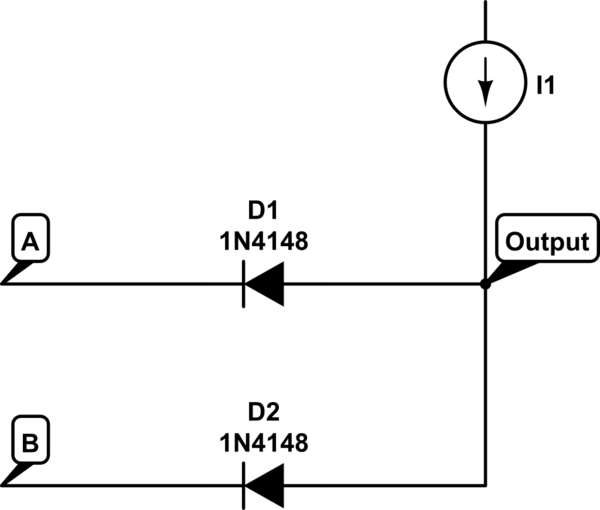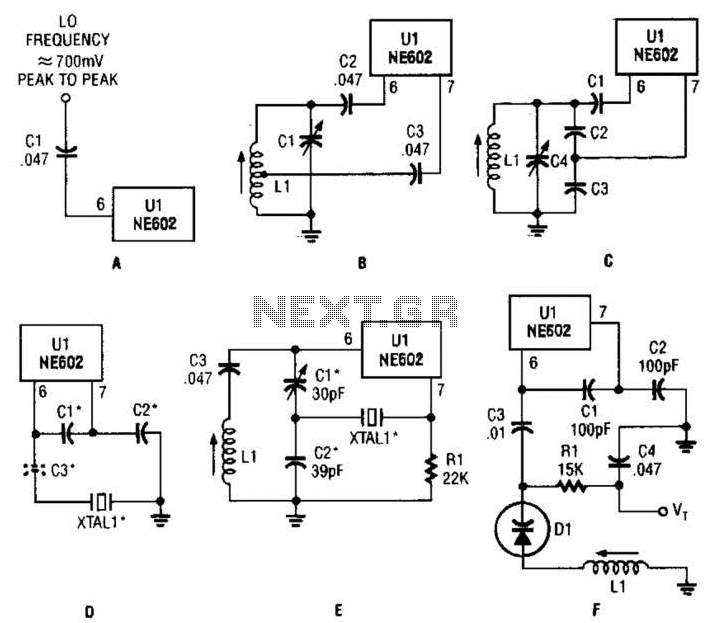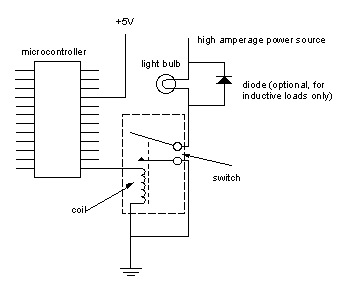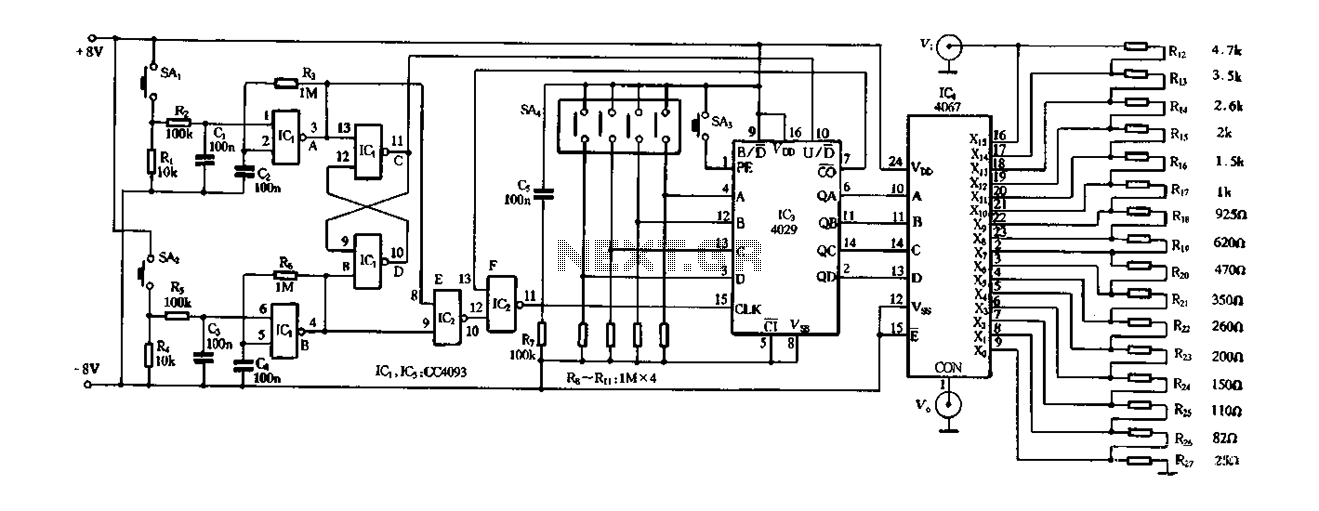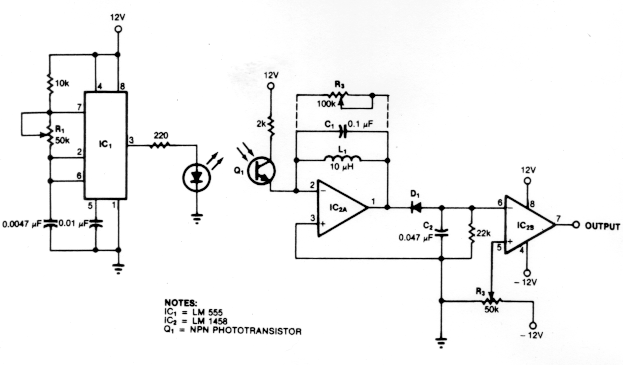
tunnel diode circuits
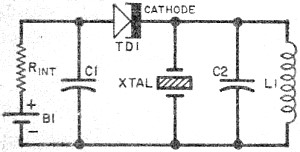
Leo Esaki invented the tunnel diode in 1957 while working at Sony (then known as Tokyo Tsushin Kogyo). Tunnel diodes feature a very narrow, heavily doped p-n junction approximately 10 nm wide, which exhibits a broken bandgap. This configuration allows conduction band electrons on the n-side to align with valence band holes on the p-side, facilitating the quantum mechanical tunneling process that gives the diode its name. The presence of negative differential resistance in part of their operating range makes tunnel diodes useful for high-frequency oscillators. An article in a 1960 edition of Popular Electronics introduced the device's characteristics and potential applications. The tunnel diode, considered a "miracle" of the semiconductor industry, typically has only two terminals but operates differently from other two-terminal devices such as resistors and capacitors. For instance, when voltage is applied to a resistor, the current flow can be determined by Ohm's law, where an increase in voltage results in a proportional increase in current. However, the tunnel diode behaves uniquely; as discovered by Dr. Leo Esaki, unusual doping of the germanium-diode junction results in decreased current flow despite an increase in applied voltage. This phenomenon is known as negative resistance, enabling the tunnel diode to perform its distinctive functions.
The forward characteristic curve of the tunnel diode illustrates this negative resistance region, where the current through the diode decreases even as the voltage across it increases. In comparison, a tetrode vacuum tube with a fixed screen voltage of 200 volts and a variable plate voltage between 0 and 300 volts demonstrates a similar behavior. As the plate voltage is increased, the plate current typically rises until it reaches around 100 volts, at which point a secondary emission from the plate causes the current to decrease. This decrease in plate current with an increase in plate voltage is another example of negative resistance. Once the plate voltage surpasses the screen voltage, the plate current resumes its increase. This behavior, contrary to Ohm's law, is characteristic of both the tetrode and the tunnel diode, which exhibit negative resistance in specific operating ranges.
The tunnel diode's unique properties make it suitable for various applications, particularly in high-speed electronics. Its ability to operate at high frequencies and its negative resistance characteristics allow for the design of oscillators, amplifiers, and other circuits that exploit these features. In practical circuit design, the tunnel diode can be integrated into oscillators to achieve stable frequency outputs, enabling advancements in telecommunications and signal processing technologies. The understanding of its operational principles and characteristics is crucial for engineers and designers working with high-frequency electronic systems.Leo Esaki invented the tunnel diode in 1957 while working at Sony (Tokyo Tsushin Kogyo at the time). Tunnel diodes have a very narrow, heavily doped p n junction only around 10nm (100 G…) wide that exhibits a broken bandgap, where conduction band electrons and therefore on the n-side are approximately aligned with valence band holes on the p-side facilitate the quantum mechanical tunneling process after which the diode is named. A negative differential resistance in part of their operating range makes them useful for high frequency oscillators. This article in a 1960 edition of Popular Electronics introduces the device`s characteristics and potential uses.
By now, just about everyone has heard of the tunnel diode, latest "miracle" from the semiconductor industry. Though related to the tube and transistor, the tunnel diode ordinarily has only two terminals. Yet it differs from other two-terminal devices (resistors, capacitors, and so on) in a very special way.
Apply voltage to a resistor, for example, and you can determine current flow by Ohm`s law. Increase the voltage across the resistor, and the current flow through the resistor will increase in proportion. But this is not so with the tunnel diode. The effect which brought about the practical construction of this unique semiconductor was discovered by Dr.
Leo Esaki, a brilliant Japanese scientist. Dr. Esaki determined that unusual doping of the germanium-diode junction would cause the current flow to decrease, even though the applied voltage was increased. This effect, known as negative resistance, enables the tunnel diode to perform its unusual feats. Fig. 2. Tunnel-diode forward characteristic curve. In negative-resistance slope range, current through diode decreases even though voltage across diode increases.
Figure 1(A) shows a tetrode vacuum tube with a fixed screen voltage of 200 volts and a plate voltage that can be varied between 0 and 300 volts. The tube`s control grid is grounded, since we need no input signal to the tetrode for the purposes of this example.
Let`s vary the plate voltage between 0 and 300 volts and record the changes in the tetrode`s plate current as shown on the milliammeter - see Fig. 1(B). Note that the plate current increases in the normal fashion as the plate voltage is increased until the plate voltage reaches a value of about 100 volts.
At this point a peculiar phenomenon occurs due to the secondary emission from the plate - the plate current decreases as the plate voltage increases. This decrease in plate current with increase in plate voltage is called negative resistance, which is a well-known characteristic of tetrodes.
When the plate voltage reaches the value of the screen voltage, 200 volts in this example, the plate current increases as before. Negative resistance is seemingly contrary to Ohm`s law. If we were to apply a steadily increasing voltage across a resistor, for example, the current through the resistor would increase proportionately.
If we carried this far enough, the resistor would eventually go up in smoke. But in this case, steadily increasing voltage on the tetrode`s plate brings steadily decreasing current. The tetrode in this example actually exhibits a negative resistance at plate voltages between about 100 and 200 volts.
Now that we know what negative resistance is, let`s return to the tunnel diode. The slope of the tunnel diode`s forward-characteristic curve is very much like the tetrode`s plate-characteristic curve. See Fig. 2. Note that as the diode voltage is increased positively from zero to Vp, the tunnel-diode curve is similar to that for any conven
🔗 External reference
The forward characteristic curve of the tunnel diode illustrates this negative resistance region, where the current through the diode decreases even as the voltage across it increases. In comparison, a tetrode vacuum tube with a fixed screen voltage of 200 volts and a variable plate voltage between 0 and 300 volts demonstrates a similar behavior. As the plate voltage is increased, the plate current typically rises until it reaches around 100 volts, at which point a secondary emission from the plate causes the current to decrease. This decrease in plate current with an increase in plate voltage is another example of negative resistance. Once the plate voltage surpasses the screen voltage, the plate current resumes its increase. This behavior, contrary to Ohm's law, is characteristic of both the tetrode and the tunnel diode, which exhibit negative resistance in specific operating ranges.
The tunnel diode's unique properties make it suitable for various applications, particularly in high-speed electronics. Its ability to operate at high frequencies and its negative resistance characteristics allow for the design of oscillators, amplifiers, and other circuits that exploit these features. In practical circuit design, the tunnel diode can be integrated into oscillators to achieve stable frequency outputs, enabling advancements in telecommunications and signal processing technologies. The understanding of its operational principles and characteristics is crucial for engineers and designers working with high-frequency electronic systems.Leo Esaki invented the tunnel diode in 1957 while working at Sony (Tokyo Tsushin Kogyo at the time). Tunnel diodes have a very narrow, heavily doped p n junction only around 10nm (100 G…) wide that exhibits a broken bandgap, where conduction band electrons and therefore on the n-side are approximately aligned with valence band holes on the p-side facilitate the quantum mechanical tunneling process after which the diode is named. A negative differential resistance in part of their operating range makes them useful for high frequency oscillators. This article in a 1960 edition of Popular Electronics introduces the device`s characteristics and potential uses.
By now, just about everyone has heard of the tunnel diode, latest "miracle" from the semiconductor industry. Though related to the tube and transistor, the tunnel diode ordinarily has only two terminals. Yet it differs from other two-terminal devices (resistors, capacitors, and so on) in a very special way.
Apply voltage to a resistor, for example, and you can determine current flow by Ohm`s law. Increase the voltage across the resistor, and the current flow through the resistor will increase in proportion. But this is not so with the tunnel diode. The effect which brought about the practical construction of this unique semiconductor was discovered by Dr.
Leo Esaki, a brilliant Japanese scientist. Dr. Esaki determined that unusual doping of the germanium-diode junction would cause the current flow to decrease, even though the applied voltage was increased. This effect, known as negative resistance, enables the tunnel diode to perform its unusual feats. Fig. 2. Tunnel-diode forward characteristic curve. In negative-resistance slope range, current through diode decreases even though voltage across diode increases.
Figure 1(A) shows a tetrode vacuum tube with a fixed screen voltage of 200 volts and a plate voltage that can be varied between 0 and 300 volts. The tube`s control grid is grounded, since we need no input signal to the tetrode for the purposes of this example.
Let`s vary the plate voltage between 0 and 300 volts and record the changes in the tetrode`s plate current as shown on the milliammeter - see Fig. 1(B). Note that the plate current increases in the normal fashion as the plate voltage is increased until the plate voltage reaches a value of about 100 volts.
At this point a peculiar phenomenon occurs due to the secondary emission from the plate - the plate current decreases as the plate voltage increases. This decrease in plate current with increase in plate voltage is called negative resistance, which is a well-known characteristic of tetrodes.
When the plate voltage reaches the value of the screen voltage, 200 volts in this example, the plate current increases as before. Negative resistance is seemingly contrary to Ohm`s law. If we were to apply a steadily increasing voltage across a resistor, for example, the current through the resistor would increase proportionately.
If we carried this far enough, the resistor would eventually go up in smoke. But in this case, steadily increasing voltage on the tetrode`s plate brings steadily decreasing current. The tetrode in this example actually exhibits a negative resistance at plate voltages between about 100 and 200 volts.
Now that we know what negative resistance is, let`s return to the tunnel diode. The slope of the tunnel diode`s forward-characteristic curve is very much like the tetrode`s plate-characteristic curve. See Fig. 2. Note that as the diode voltage is increased positively from zero to Vp, the tunnel-diode curve is similar to that for any conven
🔗 External reference
